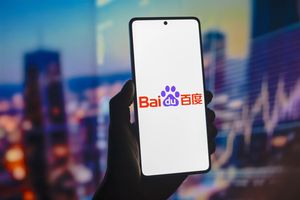Financial News
Gold Market on the Cusp of a New Era: SMX Unveils Molecular-Marking for Full Traceability at DMCC Conference

The global gold market is standing at a pivotal moment, poised for a transformative shift towards unprecedented transparency and accountability. Today, November 25, 2025, at the prestigious DMCC Precious Metals Conference in Dubai, SMX is presenting its groundbreaking molecular-marking and digital ledger technology. This innovative solution promises to redefine the provenance of precious metals, offering a verifiable, end-to-end traceability from mine to market. The unveiling marks a significant leap in addressing the industry's increasing demand for scientific verification over traditional trust-based systems, with immediate implications for regulatory compliance, ethical sourcing, and investor confidence.
Redefining Provenance: SMX's Game-Changing Technology Unveiled
The DMCC Precious Metals Conference, themed "The Future of Precious Metals: Tariffs, Tokenisation and Trade Flows," serves as the ideal platform for SMX's (SMX) presentation, titled "From Mine to Market: The Physical-to-Digital Link Powering Transparency in Precious Metals." The core message is clear: to establish a new, scientifically verifiable standard for certainty, transparency, and authenticity across the entire precious metals value chain. This move directly addresses the industry's evolving landscape, where stakeholders are increasingly demanding robust proof of origin and ethical sourcing.
At the heart of SMX's innovation lies its patented molecular-marking process. This technology involves embedding an invisible, tamper-proof chemical signature directly into gold (and silver) at its point of origin, typically the mine. This unique molecular ID is designed to be permanent, capable of surviving even extreme industrial processes such as melting, refining, and recasting, ensuring the integrity of the mark throughout the material's lifecycle. Complementing this physical marking is a sophisticated digital ledger integration. Each molecularly marked piece of metal is linked to a secure, blockchain-backed digital registry. This creates a "digital passport" or "digital twin" for the physical asset, meticulously recording its origin, lifecycle events, custodial history, and processing information.
This dual approach enables end-to-end traceability, providing continuous and verifiable provenance from the mine, through refining, trading, vaulting, and ultimately to recycling. Every handoff, every transformation in the material's state, can be immutably recorded on the blockchain, culminating in a fully auditable supply chain. This enhanced chain-of-custody visibility empowers refiners, traders, insurers, and regulators to verify origin and lifecycle with unprecedented confidence. It also significantly bolsters compliance with stringent industry standards, including the World Gold Council's Responsible Gold Guidance, UAE Good Delivery, and LBMA guidelines, all while meeting the escalating client expectations for verified, traceable gold. Furthermore, by forging a persistent physical-to-digital link, SMX's technology lays a crucial foundation for the future traceability and tokenization of gold and silver assets, transforming ESG compliance from a mere declaration into a strategic asset backed by verifiable data.
Market Implications: Identifying Potential Winners and Losers in a Transparent Gold Market
The introduction of SMX's molecular-marking and digital ledger technology is set to trigger significant shifts across the gold market, creating distinct opportunities and challenges for various players. Companies that embrace this new paradigm of transparency and traceability are likely to emerge as leaders, while those resistant to change may face increasing scrutiny and competitive disadvantages.
Potential Winners:
- Responsible Miners: Gold mining companies that can demonstrate ethical sourcing and environmental compliance from the outset will gain a significant competitive edge. Miners committed to ESG (Environmental, Social, and Governance) principles, especially those already adhering to standards like the World Gold Council's Responsible Gold Guidance, will find it easier to integrate SMX's technology, thereby commanding premium pricing or preferred buyer status. Companies like Barrick Gold (NYSE: GOLD) and Newmont Corporation (NYSE: NEM), which have publicly emphasized their commitment to responsible mining, could leverage such technology to further solidify their market position and attract ethically-minded investors.
- Reputable Refiners and Mints: Refiners and mints that adopt SMX's technology will be able to offer fully traceable products, assuring their clients of the gold's provenance. This will be particularly valuable for those supplying to jewelry brands, technology companies, and financial institutions demanding verifiable responsible sourcing. The London Bullion Market Association (LBMA) accredited refiners, already operating under strict guidelines, could integrate this technology to enhance their "Good Delivery" status.
- Luxury Jewelry Brands: High-end jewelry retailers, such as Tiffany & Co. (NYSE: TIF) (a subsidiary of LVMH Moët Hennessy Louis Vuitton), Cartier (owned by Richemont, SWX: CFR), and Chopard, which cater to consumers increasingly concerned with ethical sourcing, will benefit immensely. Being able to guarantee the origin of their gold through scientific verification will bolster their brand reputation, meet consumer demand for transparency, and potentially open new market segments.
- Technology Providers & Blockchain Developers: Beyond SMX, other technology companies specializing in blockchain solutions, data analytics, and supply chain management could see increased demand for integration services and complementary technologies to support the new traceability infrastructure.
- Ethical Investment Funds: Funds focused on ESG investing will find it easier to identify and invest in gold-backed assets that meet strict ethical and responsible sourcing criteria, potentially driving more capital into transparent gold supply chains.
Potential Losers:
- Illicit and Unregulated Miners/Traders: The most significant impact will be on those involved in illegal, conflict, or unregulated gold mining and trading. The inability to provide verifiable provenance will make it increasingly difficult for their gold to enter legitimate supply chains, effectively cutting off their market access. This will put immense pressure on operations in regions known for artisanal and small-scale mining (ASM) lacking proper oversight.
- Less Transparent Refiners and Dealers: Refiners and dealers who cannot or will not adopt advanced traceability technologies may find themselves marginalized. Their products could be viewed with suspicion, leading to reduced demand from responsible buyers and potentially lower market prices.
- Traditional Trust-Based Systems: The shift towards scientific verification will challenge the long-standing reliance on purely trust-based relationships within certain segments of the market. While relationships will remain important, they will increasingly need to be underpinned by verifiable data.
- Companies with Weak ESG Practices: Any company in the gold supply chain with poor ESG practices will find it harder to mask these deficiencies. The heightened transparency will expose irresponsible practices, potentially leading to reputational damage, regulatory fines, and reduced market access.
The overall effect will be a market bifurcation, where transparent and verifiable gold commands a premium and preferred status, while opaque sources face increasing barriers to entry and diminished value.
The Wider Significance: A Paradigm Shift for the Global Gold Industry
SMX's introduction of molecular-marking and digital ledger technology at the DMCC conference represents more than just a technological upgrade; it signals a fundamental paradigm shift for the global gold industry. This event is a critical juncture in the broader trend towards greater transparency, accountability, and sustainability across all commodity markets, driven by evolving consumer expectations, stringent regulatory demands, and the imperative of ethical supply chains.
This initiative fits perfectly within broader industry trends emphasizing responsible sourcing. The gold industry has, for years, grappled with the challenges of "conflict gold," illicit mining, and human rights abuses in its supply chain. Organizations like the LBMA (London Bullion Market Association) and the World Gold Council have established robust guidelines, such as the Responsible Gold Guidance, to combat these issues. SMX's technology provides a powerful tool to enforce and verify adherence to these guidelines, moving beyond mere declarations to tangible, scientific proof. This aligns with the increasing demand from institutional investors and consumers alike for ESG-compliant products, positioning verifiable gold as a premium asset.
The potential ripple effects on competitors and partners are substantial. Other technology companies offering traceability solutions, while not directly competitive with SMX's unique molecular marking, will likely face pressure to integrate with or develop complementary solutions that offer similar levels of verifiable provenance. Traditional assaying and auditing firms may need to adapt their services to incorporate digital ledger verification and molecular analysis. Furthermore, this technology could set a new benchmark for other precious metals and even broader commodity markets, where similar issues of provenance and ethical sourcing exist. If successful in gold, the methodology could be adapted for diamonds, cobalt, tin, and other minerals, creating a cascade of transparency across global supply chains.
Regulatory and policy implications are profound. Governments and international bodies are continuously seeking ways to combat money laundering, terrorist financing, and illicit trade facilitated by opaque gold markets. SMX's technology offers a robust mechanism for regulators to track and verify gold's journey, making it significantly harder for illegal activities to flourish. This could lead to new regulatory frameworks or amendments to existing ones, mandating or strongly encouraging the use of such traceability solutions, especially in major trading hubs like Dubai, London, and New York. Historically, similar pushes for transparency have occurred in industries like diamonds, with the Kimberley Process Certification Scheme, though often criticized for its limitations, marking a significant step towards conflict-free sourcing. SMX's solution, with its scientific and digital backbone, aims to surpass such precedents in terms of verifiable integrity.
The Road Ahead: Navigating a Transparent Future for Gold
The unveiling of SMX's molecular-marking and digital ledger technology marks the beginning of a transformative journey for the gold market, ushering in a future defined by unprecedented transparency and accountability. The short-term possibilities include rapid pilot programs and partnerships between SMX and leading gold miners, refiners, and luxury brands eager to establish themselves as pioneers in ethical sourcing. We can anticipate increased adoption by companies aiming to meet existing and anticipated regulatory requirements and to satisfy the growing consumer demand for ethically produced goods.
In the long term, this technology has the potential to become an industry standard, fundamentally altering how gold is sourced, traded, and valued. The "digital passport" for gold could facilitate more efficient and secure transactions, potentially reducing insurance costs and enhancing liquidity for verifiable assets. We may see the emergence of "premium gold" markets, where fully traceable and ethically sourced gold commands a higher price, reflecting its added value in terms of trust and compliance. This could also pave the way for more sophisticated financial instruments based on tokenized, verifiable gold, further integrating precious metals into the digital economy.
Potential strategic pivots or adaptations will be required across the supply chain. Miners will need to invest in the necessary equipment and processes to apply molecular marks at the point of extraction. Refiners and fabricators will need to integrate molecular reading and digital ledger updating into their operations. Traders and financial institutions will need to adapt their due diligence processes to incorporate these new verifiable data points. Market opportunities will emerge for service providers specializing in the implementation, auditing, and maintenance of these new traceability systems. Challenges will include the initial cost of adoption, the complexities of integrating new technologies into existing global supply chains, and ensuring interoperability across different systems and jurisdictions.
Several scenarios could unfold. In an optimistic scenario, widespread adoption leads to a significantly cleaner, more responsible gold market, boosting consumer confidence and attracting new investment. A more cautious scenario might see slower adoption due to cost concerns or resistance from entrenched interests, leading to a bifurcated market where traceable gold coexists with less transparent alternatives, albeit with a growing premium for the former. The most challenging scenario would involve significant regulatory hurdles or technological integration failures, hindering widespread implementation. However, given the current market demand for ESG compliance, the optimistic scenario appears increasingly plausible.
A New Era of Trust: Wrapping Up the Gold Market's Traceability Revolution
The presentation of SMX's molecular-marking and digital ledger technology at the DMCC Precious Metals Conference today, November 25, 2025, represents a monumental stride towards a fully traceable gold market. The key takeaway is the industry's decisive move from a trust-based system to one underpinned by scientific verification and immutable digital records. This innovation promises to provide end-to-end provenance, from the mine to the final product, addressing critical issues of ethical sourcing, regulatory compliance, and investor confidence.
Moving forward, the gold market is poised for a significant transformation. The ability to verify the origin and journey of every gram of gold will not only enhance its integrity but also potentially unlock new value streams through premium pricing for ethically sourced material and the seamless integration into digital asset ecosystems via tokenization. This technological leap will undoubtedly redefine what constitutes "responsible gold" and set a new global standard for the industry.
Investors should closely watch the adoption rates of this technology across major mining companies, refiners, and luxury brands. Key indicators will include partnerships announced by SMX, regulatory responses from bodies like the LBMA and national governments, and the emergence of new financial products leveraging verifiable gold. The coming months will be crucial in determining the pace and scale of this traceability revolution, but the direction is clear: the future of gold is transparent, verifiable, and digitally empowered.
This content is intended for informational purposes only and is not financial advice
More News
View More




Recent Quotes
View More
Quotes delayed at least 20 minutes.
By accessing this page, you agree to the Privacy Policy and Terms Of Service.



